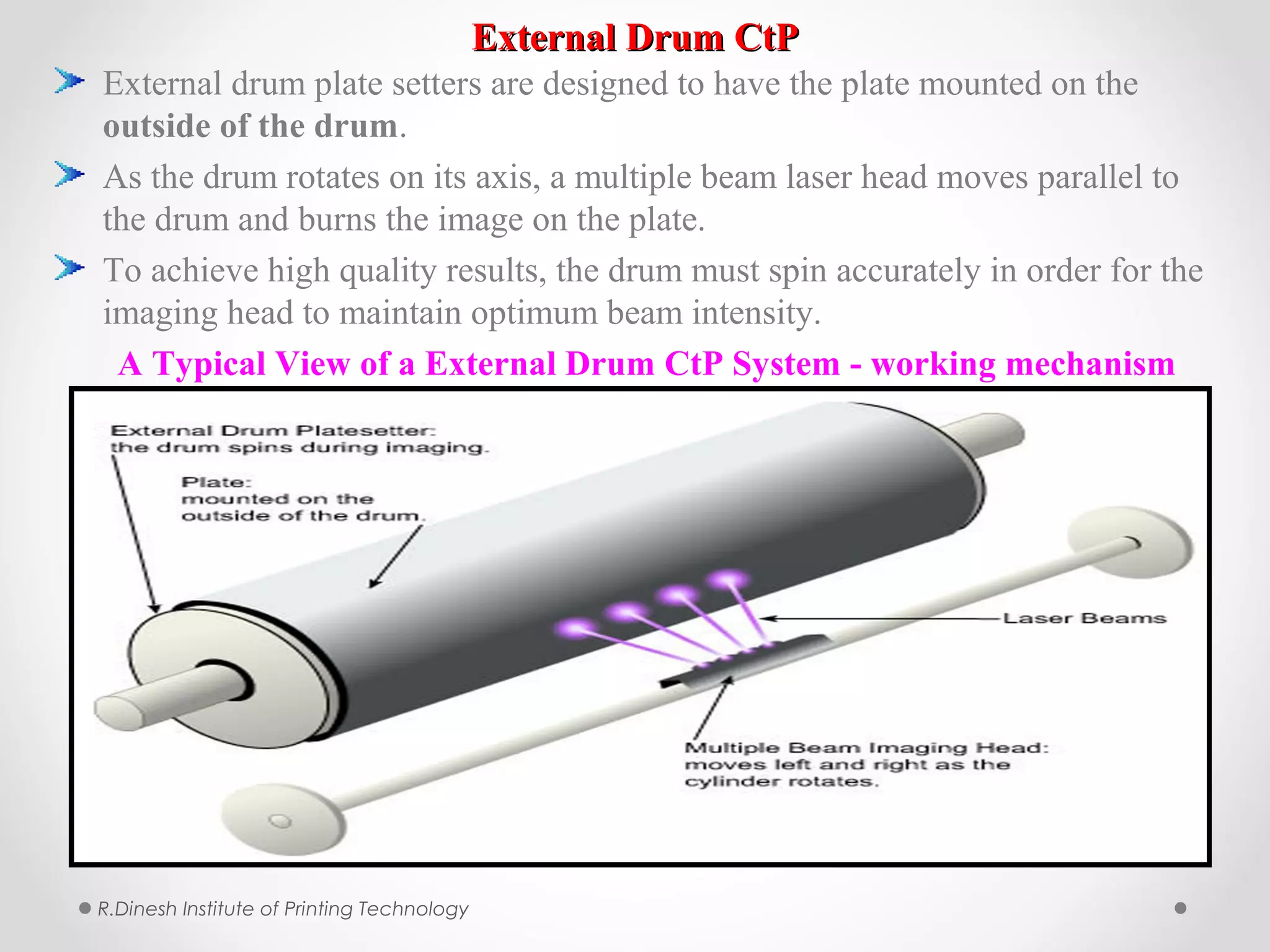Computer to plate (CTP) technology directly images printing plates using lasers rather than first exposing film. This eliminates film processing and improves image quality with less dot gain. CTP uses platesetters with flatbed, internal drum, or external drum designs to image plates. Common plate materials include aluminum and photopolymer plates. Thermal lasers and GLV technologies provide high-quality, high-speed imaging. CTP offers advantages like reduced time and errors, easier changes, and more efficient digital file storage compared to conventional film workflows. New advances are eliminating the plate entirely in some systems.














